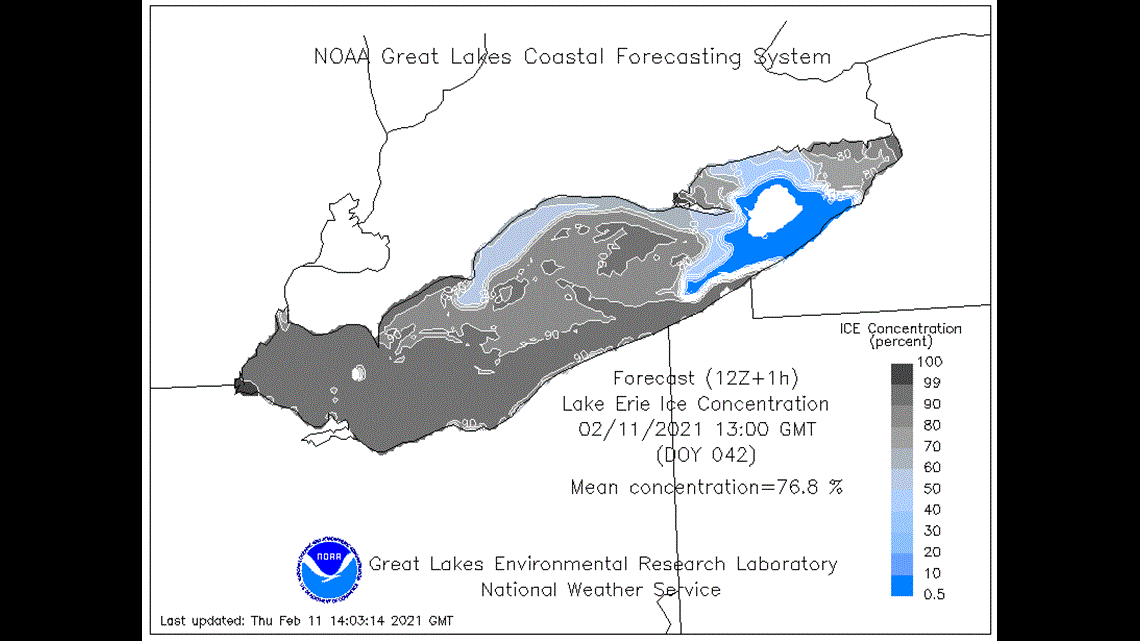BUFFALO, N.Y. — Within five days, Lake Erie's ice coverage increased by over 50 percent from February 4 through 9. And the forecast is on track to keep the lake more covered than not for the rest of February.
The recent and dramatic jump correlates with the extended stretch of below average temperatures Western New York has experienced since the beginning of February. So far, Buffalo's average temperature for this February is 22.3 degrees. That's two degrees below the monthly norm of 24.9 degrees for mid-February. And the extended forecast keeps Western New York feeling the chill for the next 7 to 10 days.
In late-January, scientists at the National Oceanic and Atmospheric Administration (NOAA) revealed that there was a better chance for more ice coverage over the Great Lakes this winter. Specifically, called for more than 60 percent of Lake Erie to freeze over by the climatological peak in late February-early March. But Lake Erie already reached ice coverage of more than 80 percent earlier this month, surpassing this initial forecast.
As of February 11, Lake Erie's total ice coverage sits at just over 76 percent. This slightly less than the maximum measured just a few days ago and there currently is a small downward trend in ice cover. However, Lake Erie's current ice coverage is well above the 47-year average for mid-February of 60-65 percent.


Great Lakes ice coverage is one of the more variable factors of each winter for the region. In general, signs point to a long-term decline in maximum ice coverage for the Great Lakes driven likely by climate change.



